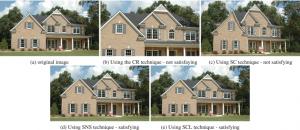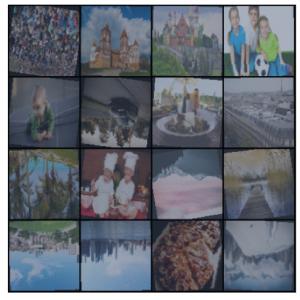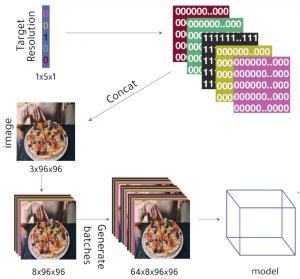Scientists claim to have established a deep learning device that can exactly predict image retargeting dimensions an automate cropping and resizing
SHARJAH, EMIRATE OF SHARJAH, UNITED ARAB EMIRATES, January 20, 2025 /EINPresswire.com/ -- by Saad Lotfi, University of Sharjah
Using deep learning models, scientists at Sharjah University have designed techniques to automatically predict suitable image dimensions to fit different screens or devices far more efficiently and effectively than current technologies used for image cropping and resizing.
The deep learning models the scientists propose in their research (https://ieeexplore.ieee.org/abstract/document/10776979) are based on transfer learning devices, such as Resnet18, DenseNet121, and InceptionV3. They claim their models can predict the correct dimensions for the input images with specific resolution.
With the advent of computers, image retargeting has become a widely practiced technique. It essentially adjusts the dimensions of an input image by simultaneously preserving its visual qualities and details as it is being resized to fit onto a variety of screens or devices.
The rise of digital devices including smartphones, tablets, and computers, has made it necessary to make dynamic adjustments to the sizes of images and videos to accommodate the specific display requirements of each device.
Various image retargeting techniques are currently available and affordable, and the authors mention cropping (CR), Scaling (SCL), seam carving (SC), warping (WARP), Scale-and-Stretch (SNS), Multi-Operator (MULTI), among others.
However, they maintain that available techniques fall short of the ability to adjust an image’s dimension by themselves without direct human control, “since different screens feature different aspect ratios that could cause images not optimized for that screen to become cropped or distorted.”
They throw light on the “gap in automating the decision of the best retargeting approach based on an image and the target resolution,” saying that their “research attempts to bridge this gap and aims to build a model to determine which technique best retargets an image to minimize information loss and preserve quality.”
The authors believe automation is the best way to target a specific image with a specific dimension. For this reason, they propose deep learning models based on transfer learning, and they use transfer learning devices such as Resnet18, DenseNet121, and InceptionV3 as tools with the ability “to predict the suitable retargeting method for the input image with a specific resolution.”
Transfer learning employs machine learning techniques through which models built specifically for a particular task are suitably adjusted to fit another assignment. Resnet18, DenseNet121, and InceptionV3 are deep learning models designed to perform a variety of tasks that include understanding image details and structure, image recognition and classification as well as object detection and image segmentation.
The authors use a dataset of 46,716 images of different resolutions from various retargeting techniques belonging to six categories. They say they conducted experiments “with models where the category is fed as a third input and with the resolutions encoded as an extra channel in the image.
“Furthermore, the models are evaluated with various evaluation metrics. The outcomes demonstrated the effectiveness of the proposed approach for selecting the proper retargeting technique with a best case F1 score of 90%.”
The authors tout their technique as “optimizing” as it renders the prediction of image targeting tasks as effective and functional as possible. They write, “By optimizing images to fit different screen sizes and aspect ratios, we can ensure they display correctly on various devices and look good regardless of screen size or aspect ratio differences.
“Deep learning has quickly become one of the go-to techniques for classifying image retargeting methods since its capabilities allow it to automatically extract features from images and effectively capture all complex relationships.”
The authors present what they describe as “novel transfer learning models for the automatic identification of image retargeting methods. We used several models, such as base CNN, Resnet18, DenseNet121, and InceptionV3. The models are assessed using a variety of evaluation measures, and the results show how effective the models are for choosing the best retargeting method.”
The authors do not mention when they expect their new image retargeting techniques to be commercially available, but they highlight the need for further research to “develop a model that chooses the best technique and retargets the image to the required resolution in a fully automatic approach.”
In addition, they “plan to extend the annotated dataset with more samples and additional retargeting methods to provide a more precise and accurate model that can generalize to many use cases.”
LEON BARKHO
University Of Sharjah
+971 50 165 4376
email us here
Legal Disclaimer:
EIN Presswire provides this news content "as is" without warranty of any kind. We do not accept any responsibility or liability for the accuracy, content, images, videos, licenses, completeness, legality, or reliability of the information contained in this article. If you have any complaints or copyright issues related to this article, kindly contact the author above.




